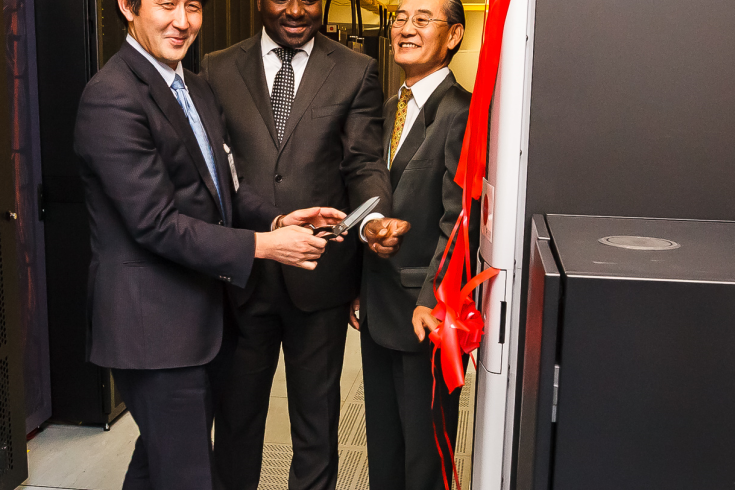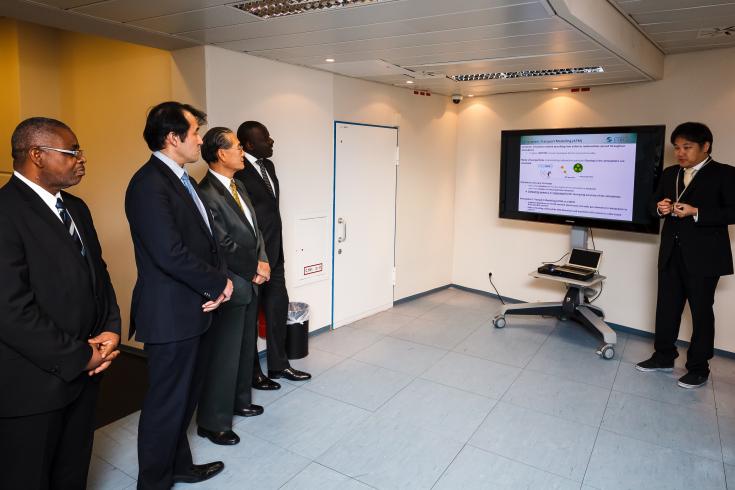Japan's intense cooperation with the CTBTO

The ribbon was cut by Yasushi Noguchi, Director for the Arms Control and Disarmament Division in the Ministry of Foreign Affairs of Japan (right), CTBTO Executive Secretary Lassina Zerbo (centre) and Ambassador Toshiro Ozawa, Japan's Permanent Representative to the UN in Vienna.
Japan is happy to provide this contribution to increase the resolution of ATM calculations and will continue to support the CTBTO’s work.
Tracking airborne radioactivity

The CTBTO's Noriyuki Kushida explained how the new system allows for higher ATM resolutions in space and time.
It is crucial for the work of the CTBTO to be able to determine the origin of radioactivity through precise ATM calculations.
Japan is a driving force in promoting the CTBT. The CTBT, Hiroshima and Nagasaki share common objectives. The CTBT will be a first step towards making sure that what happened to Hiroshima will never happen again.
Japan’s unwavering support for the CTBTO
Japan fully supports the activities of the CTBTO under the leadership of the Executive Secretary Zerbo, especially new initiatives such as the Group of Eminent Persons. We fully support the early entry into force of the CTBT and will actively pursue dialogue with Asian and Pacific countries as well as Annex 2 States to sign and ratify the CTBT.
Striving towards a nuclear-weapon-free world
During his visit, the Executive Secretary and Tomihisa Taue, the Mayor of Nagasaki, discussed the need to prevent the use of nuclear weapons by every means.
The activities of the CTBTO aim at the same objectives as we do in Nagasaki. Let’s continue and deepen our cooperation in order not to experience the disasters of a nuclear bomb again.
Informing the youth about the horrors of nuclear weapons
26 Nov 2013
